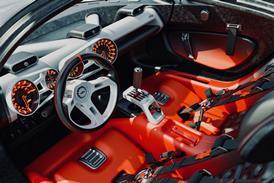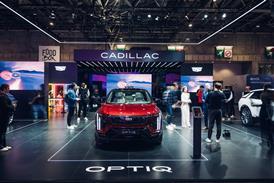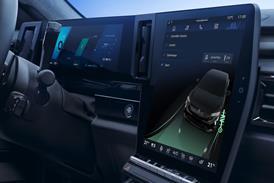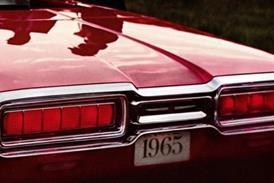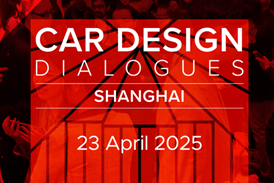








If you attended our Car Design Night at this year's Geneva motor show, you may well have seen the U-Box concept vehicle parked outside the entrance. Developed by Huntsman Advanced Materials, this 'last mile' delivery vehicle is a showcase of the company's composite materials expertise.






"The D3 Group [based in Paris] designed the car and also came up with the idea of 'last-mile delivery'," explains Harald Wiedemann, Vice President of Huntsman Advanced Materials (EMEAI). "They contacted us to see if we can help with materials across the entire value chain - bringing an idea into reality across materials, processes and technologies."
The spread of composite materials down and through the auto industry is something we observed in our Geneva Trends and Overview piece and is a trend that Huntsman has also latched on to. The company is already very heavily linked to supporting the automotive industry with sustainable materials:
"We already work with OEMs for prototype tooling as well as delivering materials to small production runs for companies such as Lamborghini and Ferrari," says Wiedemann. "And we also want to break into high production runs.
"The real challenge is to keep the processing time at a comparable level to metal as it's a full-cost calculation. All the big OEMs have created partnerships with carbon manufacturers so the trend is there. We want to show that with our epoxy resin, we can deliver the performance the industry is looking for."
And it's this epoxy resin that forms the entire structure of the U-Box concept vehicle. The dark grey chassis, for example is created by combining basalt rock fibers with the resin for both low weight and strength. It's not simply a finisher over a crude frame, but a structural part of the vehicle.
It's also possible to add sustainable materials such as renewable flax for reinforcement, as well as halogen-free, fire-resistant resin and flexible composites. This broad application of high performance composites was also a significant factor in increasing the performance and exclusivity of the vehicle's design.
Huntsman's materials expertise is so broad that its portfolio of departments - from composites to textiles via electronics - developed and built every aspect of the U-Box. The seat cushion, for example, is made from polyurethane, the bumpers from energy-absorbing, flexible composite and its wheels from carbon-fiber.
The company's electronics department have also developed a lightweight, efficient OLED material that is used for illuminated signage in the cabin and is described as 'almost a printable electronic'. The same technology was used during last year's Le Mans 24-hour race.
But Huntsman's expertise isn't just in materials supply, it also specializes in tooling and manufacture. From initial evaluation models, then moulds for the composite parts required for prototyping. Its adhesives are then used to bond the composite elements together.
From a design perspective, Frédéric Robin, General Director of D3 Group, was keen to utilize this ability to produce a specialized, low production-run vehicle, while the use of sustainable composites inspired the simple, efficient and innovative design of the vehicle.
"Like this, it can carry two Euro palettes in the rear, but because of the ability to create low volume production it also runs at minimal cost," says Robin. "It's easy to fully customize the rear. We've already designed a taxi version with a fully glazed roof to explore the city...who knows, it ten years time this could be the new London taxi."
From supercars right down to small delivery vehicles, via mass-produced passenger cars, composites are the next big thing in the auto industry from both an engineering and design perspective. Huntsman Advanced Materials looks poised to capitalize on the opportunity.
Related Articles:
Winners announced in 2010 Car Design of the Year competition
Geneva motor show 2011
Geneva Motor Show 2011 - Trends & Overview ![]()










